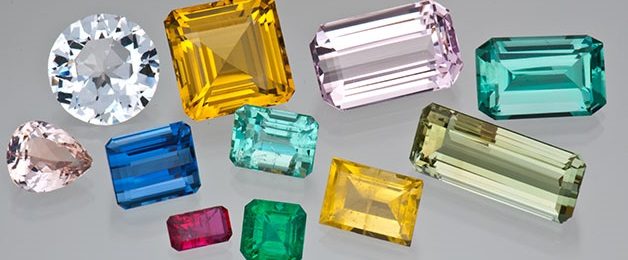To make a diamond brilliant, there is only one small step – a very special cut!
It has long been known that a specific cut could display this gems characteristics to their best advantage. The history of diamond cutting is one of continuous improvement and refined methods to bring out the best exceptional optical qualities in each gem. The product of this refinement and improvement is the brilliant cut, which has been THE way to highlight the sparkle of diamonds for over 100 years.
The brilliant cut imposes specific angles and highly accurate cutting proportions in order to showcase the gems best fire and brilliance. This cut is also used for other coloured gemstones.

The Regent Diamond
From rough diamond to polished gem
Known since the 14th century, the first polished and partially cut Diamonds were found in Europe and India. Uncut diamonds had already been worn for thousands of years.
An important step on the way to the perfect cut was the invention of the wheel, in around 1476, which greatly simplified the process of creating facets. At that time, many cuts were developed by adapting the shape of the raw material, but then also needed to follow the styles ‘in vogue’ at the time. Gems cut with a rose or pear cut were popular during the Renaissance and marquise cut was popular in the 18th Century.
Pioneers of the brilliant cut
One of the names always associated with the brilliant cut is that of Vincenzo Peruzi, a Venetian gem cutter in the 18th century who is considered a key pioneer in the art of gem cutting. The Peruzzi cut, named after him, has 58 facets and has similar proportions to the modern brilliant cut we know today.
Henry Morse, who opened the first diamond factory in North America in 1860, also had his own opinion on the ‘ideal cut’. He identified the angle of the crown and the pavilion as important parameters, they must be exactly in proportion to one and other when cut to allow maximum light to be reflected in the stone. This finding is considered a great step in cut development but it was Marcel Tolkowsky, who later scientifically analysed and further developed and perfected the brilliant cut.

Brilliant Cut Details
The modern brilliant cut
In 1919, Tolkowsky first drafted the modern brilliant cut. The design was slightly altered in May 1920, but did not lose any of its brilliance and is still called the ‘ideal cut’ to this day. The son from a family who were active in the diamond business for generations, Tolkowsky was a mathematician and gemologist. He was the first to perform a mathematical analysis of the optical qualities of reflection and refraction in a diamond, in his thesis “Diamond Design”.
The brilliant cut has 57 facets, if you count the culet there are 58. It has a circular table with 32 facets above the girdle and 24 below. The ideal angle is 34.5° on the crown and at 41 ° on the pavilion side.






